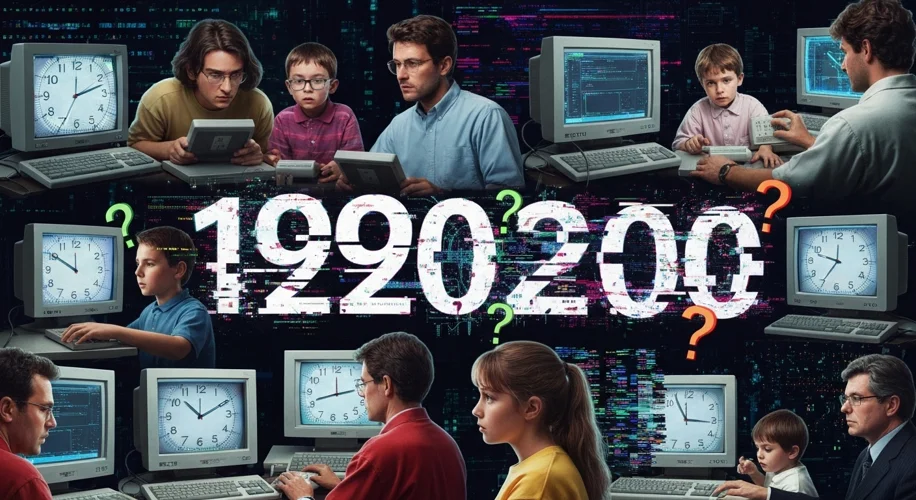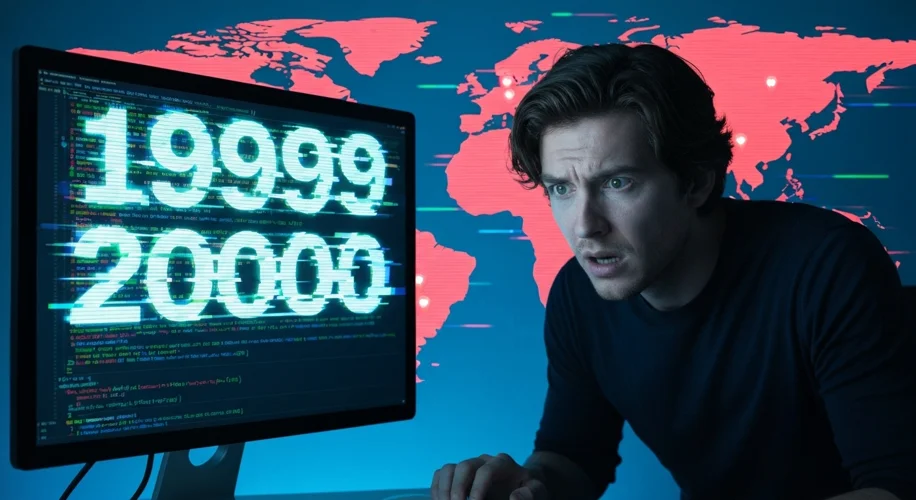As the clock ticked closer to midnight on December 31, 1999, a palpable sense of dread gripped the world. It wasn’t an invading army or a natural disaster on the horizon, but something far more insidious: the Y2K bug, also known as the Millennium Bug. For months, the world’s media had been abuzz with predictions of digital Armageddon. Would our power grids collapse? Would planes fall from the sky? Would our financial systems grind to a halt, plunging humanity into a new dark age?
The fear wasn’t entirely unfounded. At its core, the Y2K bug was a problem of digital shorthand. In the early days of computing, memory and storage were incredibly expensive. To save space, programmers often represented years using only the last two digits. So, the year 1998 became ’98, and 1999 became ’99. The looming question was: what would happen when the clock struck midnight on ’99’ to ’00’? Would computers interpret ’00’ as 1900 instead of the year 2000? If so, systems designed to rely on chronological order could malfunction, leading to a cascade of failures.

The potential consequences were dire. Experts warned of widespread power outages, as electrical grids relied heavily on computers for management. Transportation systems, from air traffic control to railway signaling, could be thrown into chaos. Financial markets, intrinsically linked by complex computer networks, faced the threat of collapse. Even everyday conveniences like ATMs, credit card systems, and telecommunications could cease to function.
Governments, corporations, and individuals worldwide scrambled to address the looming threat. This was not a problem confined to one nation or industry; it was a global digital challenge. Massive resources were poured into auditing and fixing code. In the United States, President Bill Clinton established the President’s Council on Year 2000 Conversion, led by John Koskinen, to coordinate the national effort. Companies hired legions of programmers, often offering exorbitant salaries, to go through lines of code, update systems, and test for Y2K compliance. The sheer scale of this undertaking was unprecedented. It involved everything from updating mainframe computers that ran essential services to ensuring that embedded chips in everything from traffic lights to pacemakers were Y2K-ready.
Major global efforts were undertaken. For instance, the International Civil Aviation Organization (ICAO) worked with airlines and air traffic control agencies worldwide to ensure that aviation systems would function correctly. Financial institutions collaborated through forums like the Financial Services Coordinating Committee to share best practices and ensure the stability of the global financial system. It was a race against time, fueled by the fear of the unknown.
As January 1, 2000, dawned, the world collectively held its breath. And then… nothing. Or rather, very little. While there were isolated incidents – a few power outages, some minor glitches in telephone systems, and a brief disruption to a news ticker in Japan – the widespread digital collapse predicted by many did not materialize. The massive, coordinated global effort had, by and large, succeeded.
The aftermath of the Y2K scare became a fascinating case study in risk management and global cooperation. Some critics argued that the threat had been overblown, that the doomsday scenarios were exaggerated. They pointed to the relatively minor impact as evidence that the problem was not as severe as initially portrayed, or that the fixes were more straightforward than the panic suggested.
However, a deeper analysis reveals a more nuanced picture. The lack of catastrophic failures was precisely the result of the immense preventative measures taken. The $300 billion to $600 billion spent globally on Y2K remediation was an investment in preventing disaster. It was a testament to the power of foresight and collective action. The real story of Y2K wasn’t the bugs that didn’t bite, but the successful avoidance of a potentially devastating digital crisis. It was a stark reminder of our increasing dependence on technology and the importance of vigilance in maintaining the complex systems that underpin modern society. The Y2K bug, while a source of global anxiety, ultimately served as a powerful, if nerve-wracking, lesson in digital preparedness.

